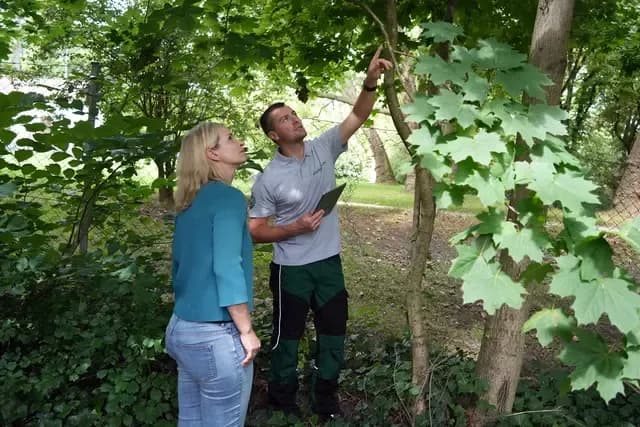Beyond the Bite: Unpacking the Hidden Hazards of Popular Eateries
Mass food poisoning outbreaks expose critical safety gaps in popular eateries. Learn from a real-world case how to identify risks, protect yourself, and navigate pathways to justice.

The Holiday Nightmare: A Case Study in Mass Contamination
Imagine a sun-drenched holiday, the kind where relaxation is paramount, only for it to be shattered by a sudden, debilitating illness. This was the grim reality for dozens of vacationers in , , following a severe outbreak of suspected food poisoning. Reports indicate that around 30 individuals fell ill, although 11 official complaints have been lodged with authorities, detailing alarming symptoms like high fever and acute gastroenteritis. The finger of suspicion points squarely at a beachside canteen, with the consumption of meat from this specific eatery believed to be the culprit. This isn't just an isolated incident of an upset stomach; it's a mass contamination event unfolding in a popular tourist destination, sparking urgent investigations by local authorities. The sheer number of affected individuals highlights a potential systemic vulnerability, turning a dream vacation into a distressing medical emergency and raising serious questions about food safety practices in high-volume, casual dining environments. What started as a simple meal quickly spiraled into a public health concern, casting a shadow over the summer season.
Decoding the Danger: Common Culprits and Hidden Pathways
The incident, with its focus on meat consumed from a beach canteen, offers a stark reminder of how easily foodborne pathogens can spread. While the specific culprit in this case is under investigation, mass food poisoning outbreaks often trace back to common bacteria like , , , or . These microscopic invaders thrive in environments where food safety protocols are lax. Think about it: a busy canteen, possibly understaffed, dealing with high volumes of raw ingredients, potentially insufficient cooking temperatures, or inadequate refrigeration for prepared foods. Cross-contamination – where harmful bacteria from raw meat transfer to ready-to-eat items via unwashed hands, cutting boards, or utensils – is another insidious pathway. Even seemingly minor lapses, such as a chef not washing hands after handling raw poultry or food left out too long in the summer heat, can create a perfect breeding ground for these pathogens, turning a seemingly innocent meal into a vector for severe illness like the acute gastroenteritis and high fevers reported by the victims. It's a silent threat, often invisible until it's too late.
Regulation Under the Sun: Safeguarding Seasonal and Mobile Food Vendors
The case in throws a spotlight on the unique challenges of regulating food safety in seasonal and mobile establishments like the implicated beach canteen. Unlike fixed restaurants, these vendors often operate with less permanent infrastructure, sometimes in less controlled environments exposed to the elements. The rapid turnover of staff, the pressure of high tourist volumes, and the potential for less stringent oversight can create fertile ground for hygiene breaches. Thankfully, the response in has been swift: special investigative teams have launched probes into the canteen's hygiene and safety conditions. The municipal authorities have also stepped in, initiating legal proceedings to uncover the truth and, crucially, to safeguard public health. This proactive stance underscores the critical need for robust, consistent regulation, especially in popular holiday spots where a single incident can have far-reaching consequences. It's a continuous battle to ensure that the allure of a convenient meal doesn't come at the cost of consumer well-being, demanding vigilance from both operators and regulatory bodies.
The Ripple Effect: Beyond Illness, Impact on Community and Trust
While the immediate suffering of those struck by food poisoning is undeniable – the debilitating fever, the acute gastroenteritis, the sheer misery of a ruined holiday – the true impact of such an incident stretches far wider. A mass contamination event isn't just a medical crisis; it's an economic and reputational blow to the local community. Imagine the ripple effect: a once-popular eatery faces closure and public distrust, potentially leading to job losses. The wider tourism sector in could suffer, as negative headlines deter future visitors. Beyond the tangible economic costs, there's the profound erosion of trust. Consumers lose faith not only in the specific vendor but potentially in the broader food safety standards of the region. This breakdown in trust can be incredibly difficult to rebuild, impacting local businesses and the community's livelihood. For the victims, the trauma extends beyond physical recovery, often leaving lasting psychological scars and a lingering apprehension about dining out. It's a stark reminder that food safety is a collective responsibility, impacting the health and prosperity of an entire ecosystem.
Your Plate, Your Power: Navigating Food Safety and Seeking Redress
In the wake of incidents like the outbreak, it's natural to feel a sense of vulnerability, but consumers possess significant power in navigating food safety and seeking redress. First, be proactive: observe your surroundings. Does the establishment look clean? Are staff handling food hygienically? Is food kept at appropriate temperatures? Don't hesitate to politely ask questions about food preparation. If you suspect food poisoning, seek medical attention immediately, as documented symptoms are crucial. Crucially, report the incident. The 11 official complaints filed in are a testament to the importance of speaking up. Contact local health authorities or consumer protection agencies. Many jurisdictions have clear channels for lodging complaints, which can trigger investigations, like the one currently underway. If you've suffered significant harm, legal avenues, as hinted by the ongoing legal actions in the case, might be available to seek compensation for medical expenses, lost wages, and suffering. Your vigilance and willingness to report are vital in holding establishments accountable and driving systemic improvements, ensuring that everyone can dine out with confidence.
Related Articles

Beneath the Surface: Italy's Botulism Crisis Uncovers Deep Food Safety Challenges

Beneath the Surface: Italy's Botulism Crisis Uncovers Deep Food Safety Challenges

Beyond the Kitchen Door: Unveiling the Critical Role of Food Safety Enforcers

Beyond the Kitchen Door: Unveiling the Critical Role of Food Safety Enforcers

When Dinner Delivers Danger: Inside the World of Food Safety Alerts

When Dinner Delivers Danger: Inside the World of Food Safety Alerts

The Silent Watchdogs: Unearthing the Hidden Dangers in Our Food Chain
